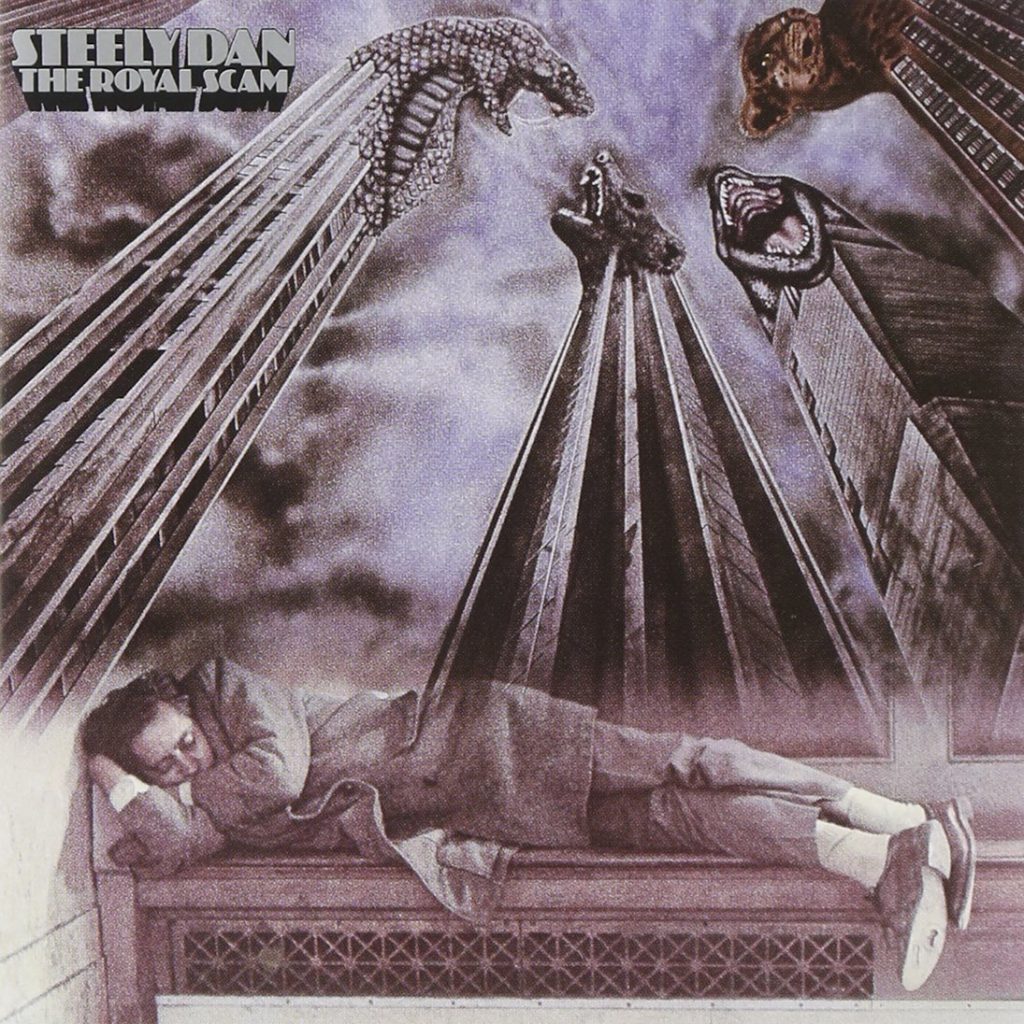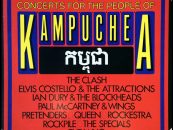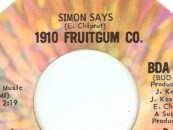 Steely Dan’s pop cultural capital has appreciated handsomely over the half century since Walter Becker and Donald Fagen bonded as Bard College outsiders, going on to write songs drawn from shared obsessions that Fagen later cited as “jazz (from the ’20s through the mid-’60s), W. C. Fields, the Marx Brothers, science fiction, Nabokov, Kurt Vonnegut, Thomas Berger and Robert Altman films,” as well as “soul music and Chicago blues.” That inventory was offered in his comments on the passing of his partner in rhyme, rhythm and “mu major” chords, in September 2017.
Steely Dan’s pop cultural capital has appreciated handsomely over the half century since Walter Becker and Donald Fagen bonded as Bard College outsiders, going on to write songs drawn from shared obsessions that Fagen later cited as “jazz (from the ’20s through the mid-’60s), W. C. Fields, the Marx Brothers, science fiction, Nabokov, Kurt Vonnegut, Thomas Berger and Robert Altman films,” as well as “soul music and Chicago blues.” That inventory was offered in his comments on the passing of his partner in rhyme, rhythm and “mu major” chords, in September 2017.
However out of time those influences might have seemed in the early ’70s, Steely Dan’s sonic alloy has spawned its own 21st century federation of admirers. Millennial hipsters otherwise scornful of Becker and Fagen’s generation spare them from “OK boomer” jibes to celebrate them on social media. Artists as diverse as David Crosby and Kanye West have emulated or sampled the band. Later Steely Dan albums subjected to unflattering reviews four decades ago are now reappraised with high scores, where the last album in the band’s initial decade of perfectionist studio albums, Gaucho, was sanctified as a pinnacle, a striking critical redemption given the chill with which it was initially received by pundits of the day.
Decoding Dan then and now should remind fans and foes alike how rock’s perceived dominance of popular music loomed over the decade that produced the band’s original, definitive cycle of seven studio albums, each more carefully polished than its predecessor. Arriving in 1972, Steely Dan had smuggled their darkly cynical world view into rock’s mainstream beneath an infectious cloak of sleek songcraft spiked with killer instrumental hooks and inventive harmonies. Three albums minted gold sales certifications and secured FM radio play even as the band itself remained faceless by design.
By 1975, Becker and Fagen had abandoned touring and downsized to a studio laboratory model aided and abetted by producer Gary Katz, engineer Roger Nichols and second guitarist Denny Dias. At a moment when prog rock bombast, disco bounce and punk thrash clashed, the Dan’s fourth full-length, Katy Lied, found once enthusiastic critics mulling second thoughts: Robert Christgau, for example, fretted that guitarist Jeff “Skunk” Baxter’s departure was pushing them to “cool, cerebral, one-dimensional” jazz influences.
In that climate, the follow-up, The Royal Scam, released in early May 1976, was proved even more divisive, augmenting the leaner ensemble core of prior albums with more aggressive ensemble arrangements, several tilting toward orchestral scale. With five guitarists, six horn players, five backing singers and a formidable anchor in bassist Chuck Rainey and drummer Bernard “Pretty” Purdie (with Rick Marotta sitting in for two tracks), the combined force of two dozen musicians carried credentials that would be parsed in the new millennium as the very DNA of “yacht rock” sophistication.
The set leads with a high point in “Kid Charlemagne,” a funny, fast-paced chase flexing the duo’s affection for second-person narratives that conjure the colorfully flawed denizens of their universe. The title character is a fugitive drug dealer modeled on Owsley “Bear” Stanley, a countercultural icon with twin identities as the Grateful Dead’s sound engineer and the Bay Area’s most celebrated artisanal chemist, renowned for the amphetamines and psychedelics that endeared him to the city’s ’60s counterculture. “While the music played, you worked by candlelight,” Fagen sings, “those San Francisco nights, you were the best in town,” reliable for “kitchen-clean” product, then recounts the downfall once “all those day-glo freaks who used to paint their face, have joined the human race.” The singer’s complicity surfaces in the final verse as Fagen urges the Kid to flee, his own desperation rising (“Is there gas in the car? Yes, there’s gas in the car! I think the people down the hall know who you are…), whether by common sense, paranoia, or both as Chuck Rainey’s turn-on-a-dime bass lines bounce beneath Bernard Purdie’s buoyant drumming, with Larry Carlton spooling out alternately fluid and raucous electric guitar solos.
Related: Our Album Rewind of Aja
While the album draws from a rotating bench of guitarists including Denny Dias, Elliott Randall, Dean Park, and Becker himself, Carlton dominates as featured soloist on at least four of its nine tracks, with a fifth alleged for “Sign In, Stranger,” a deliciously sleazy sci-fi detour to the lawless planet of Mizar 5.
Among those is “Don’t Take Me Alive,” a harrowing testimony from a man on the brink of violence. If The Royal Scam otherwise stands as one of Steely Dan’s funniest albums, this song’s obsessive narrator is lethally serious, locked and loaded for slaughter. “Agents of the law, luckless pedestrian, I know you’re out there with rage in your eyes and your megaphones,” Fagen threatens in the role of a “bookkeeper’s son” who “crossed my old man in Oregon.” With a case of dynamite, a gun, and portents of a psychic break, a cornered madman’s menace is signaled by an angular, minor-keyed guitar figure with which Carlton opens the track before lurching into the snarling solos and fills that follow.
A lighter touch and deadpan humor prevail on “Haitian Divorce,” bobbing on a reggae lite pulse as it recalls the plight of Babs and Clean Willie, a couple whose short-lived lust translates to separation, dalliance, unwanted pregnancy and “tearful reunion in the U.S.A.” Played for farce, the song offers a class in narrative economy as Babs celebrates her quick fix dissolution with a night out, a tryst with “the Charlie with the lotion and the kinky hair” and a discreet edit (“Now we dolly back, now we fade to black…”) before a penitent reconciliation as its punchline, with Dean Parks’ leering solos, with talk box tweaks courtesy of Becker, injecting lecherous comments along the way.
Between guitar pyrotechnics and sly humor, Becker and Fagen pause to ponder the tension between art and celebrity in an early track inspired by paleolithic art discovered in Northern Spain in 1868. “The Caves of Altamira” affords a meditation on the very purpose of art itself for two East Coast outsiders toiling in a Los Angeles celebrity-industrial complex they regarded with disgust, imagining back “before the fall, when they wrote it on the wall, when there wasn’t even any Hollywood.”
This glimpse of elemental self-expression is set to the album’s most expansive arrangement, its cascading brass and reed choruses and John Klemmer’s scurrying solo saxophone sculpted from jazz harmonies and counterpoint. One man’s “swing-pop” is another’s literate, jazz-influenced sensibility, focal to Steely Dan whether partly submerged in harmonic progressions or explicit as it was in Pretzel Logic’s allusions to Horace Silver, Duke Ellington and Charlie Parker, and Phil Woods’ sublime saxophone solo on Katy Lied’s “Doctor Wu,” and would emerge even more vividly on their subsequent masterpiece, Aja.
Related: Our Album Rewind of Pretzel Logic
Elsewhere on The Royal Scam, Becker and Fagen again salute orchestral jazz while also winking cheerfully (and even somewhat admiringly) at disco with “The Fez,” co-written with keyboard player and jazz veteran Paul Griffin, a floating vamp against a four-on-the-floor tempo with a nimble solo by Becker and lyrics that can be decoded as an oblique admonition to use condoms disguised as spiritual slogan.
The humor that looms there and in other tracks leavens a set that concludes with the title song’s dark vision of the class and ethnic pitfalls that give the lie to the American dream against a cinematic backdrop. Electric and acoustic pianos, organ and muttering guitar phrases sustain tension throughout, periodically stabbed with trumpet solos in a soundscape that anticipates the expanded ensembles Becker and Fagen would muster for their return to active duty in 1993, relaunching Steely Dan as a crack touring unit—the opposite of their hermetic studio “laboratory” from 1974 until initially calling it quits in 1981.
That Steely Dan’s embrace of jazz should have sparked disdain nearly five decades ago, says more about the orthodoxy of the era’s rock intelligentsia than Walter Becker and Donald Fagen’s musical agenda. That their craft has earned them commodores’ stripes for “yacht rock” is ironic for any careful listener, for whom cyberpunk pioneer William Gibson identifies the disconnect in comments made to rock historian Barney Hoskyns: “A lot of people think of Steely Dan as the epitome of boring ’70s stuff, never realizing this is probably the most subversive material pop has ever thrown up.”
Many of Steely Dan’s albums have been recently reissued in vinyl including The Royal Scam. They’re available in the U.S. here and in the U.K. here.
- ‘Running on Empty’: Jackson Browne’s Romance of the Road - 12/06/2025
- ‘Slowhand’: Eric Clapton’s 1977 Platinum Balancing Act - 11/25/2025
- Stephen Stills’ A-List Solo Debut Revisited - 11/16/2025







4 Comments so far
Jump into a conversationGreat piece, comprehensive and insightful.
I always took “Don’t Take Me Alive” as a reference to the wonderful George C. Scott movie “Flim-Flam Man”, where Michael Sarrazin holds the town hostage with a case of dynamite while the old coot escapes.
“The Royal Scam” is so-o nasty. That’s one reason among many that it’s so enjoyable.
Probably my favorite overall Steely Dan album. It was on constant rotation on my turntable as a high school senior and college freshman in the early 80s.
I liked this album when I was young. I love it now that I’m older. “Kid Charlemagne”, “Don’t Take Me Alive”, and the title track are among my favorite Dan songs.